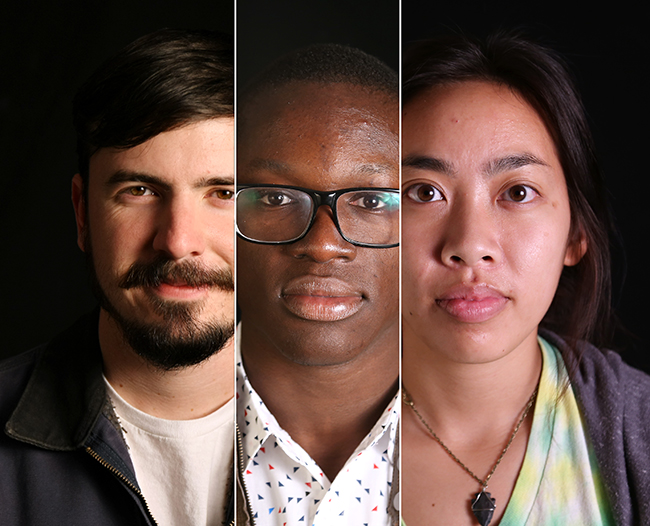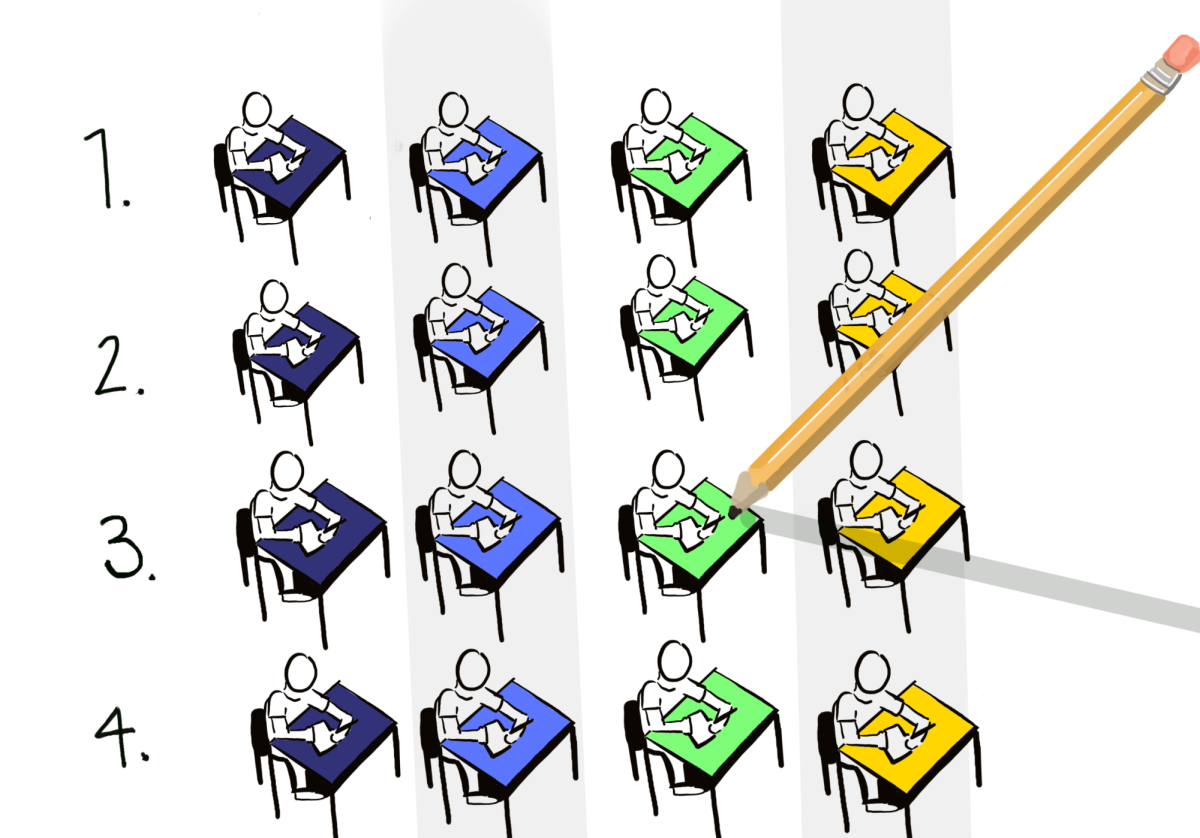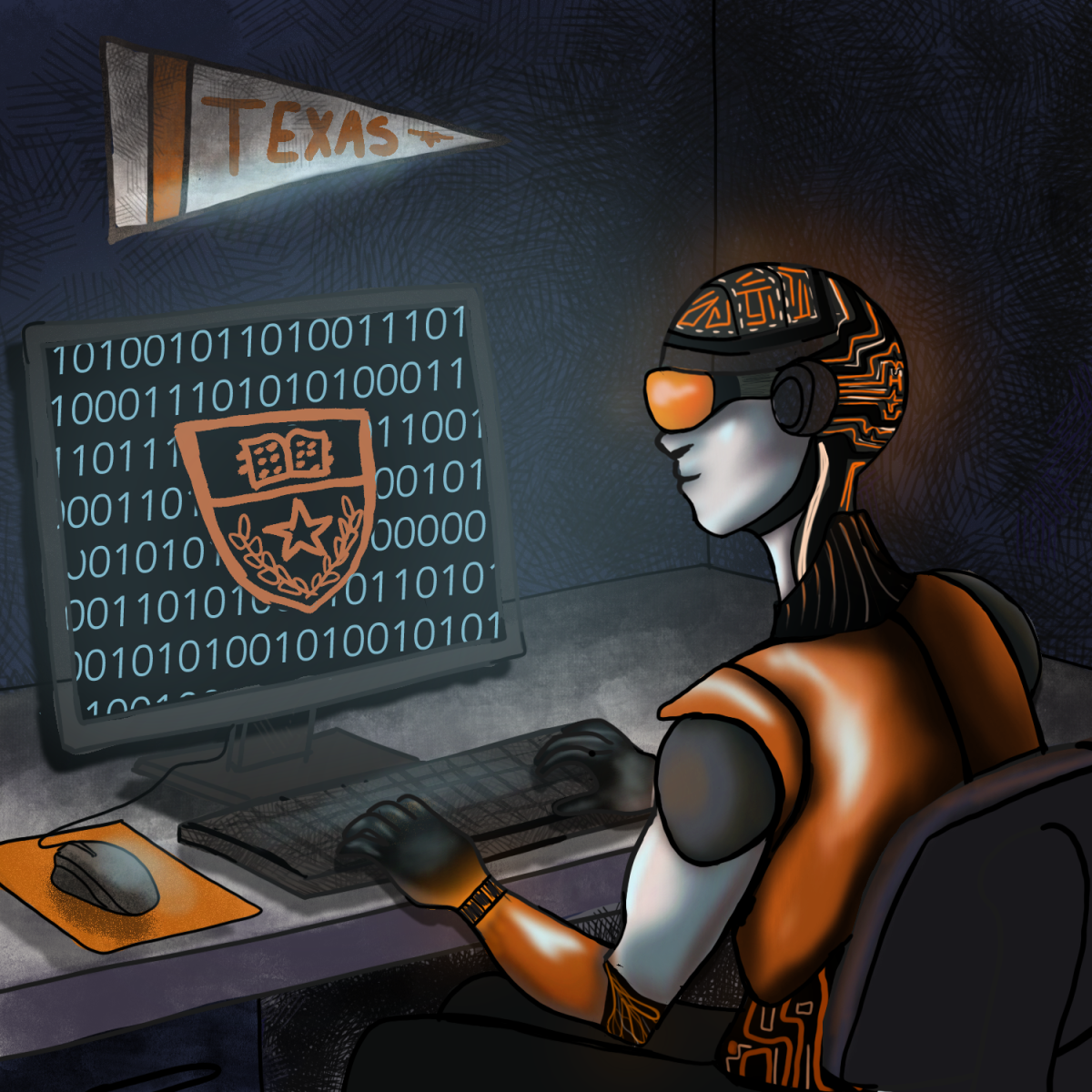The University of Texas has had a rocky history on the subject of racism. From Stephanie Eisner’s 2012 Daily Texan cartoon describing Trayvon Martin as a “handsome, sweet, innocent colored boy” to the Young Conservatives of Texas’ affirmative action bake sale, or more recently, the Fiji fraternity border patrol-themed party, there is still a thread of bias here at UT.
Perhaps it is no wonder. Many of the school’s first benefactors and key people were intolerant of racial harmony. George W. Littlefield, a Confederate war veteran, funded many of the statues around campus like those dedicated to figures such as Robert E. Lee, Jefferson Davis and other VIPs in the Confederate South.
As one walks through campus today, however, one is exposed to myriad races, colors and creeds, that co-exist within conflicting undercurrents; the region’s segregated and intolerant past and today’s trace of racial bias, however subtle that might be. The students on our present campus have the job of struggling to live within the University’s effort to create a melting pot of cultures from all over the world.
To fully comprehend the life-long implications linked to an individual’s race, it is important to understand how we define racism in society today.
For Nick Engmann, an African-American electrical engineering senior, racism is “any use of stereotypes or biases to harm another individual based on the color of their skin or how they identify themselves.”
Veiled racism has reached Engmann in his classes: “Some people don’t think that you are capable of things because you have a certain background or how they identify you. The way you speak, the nuances you drop here and there. They don’t think you’re competent.”
But sometimes, racism is more overt than subtle. The Campus Climate Response Team is responsible for receiving and tracking student complaints concerning, among other things, racial bias. As it reported Feb. 9, complaints have increased by over 700 percent since the 2012-13 academic year. The increase is due not only to high-profile incidents such as the bake sale but also to more personal attacks.
Just last semester, Engmann encountered one such incident firsthand.
“One of my African-American friends and I were walking around West Campus with some other friends and a truck drove by and bleach-bombed us,” Engmann said. “They threw balloons filled with bleach water and hit my black friend’s pants and shirt. I had heard about this occurring around campus and thought that it had been blown out of proportion, but then it happened to us. It just baffled me that this could happen so close to home. That racism is still here.”
Rachel White, a black marine biology senior, hasn’t been directly targeted at UT. However, she says that she sometimes feels uncomfortable in certain situations, such as at parties or even in a class where she may be the only black student.
“Although many people don’t have to think about their race or have to search for someone like them in their class with whom to study, as a black woman, I do,” White said.
Some students have a different perspective and have not encountered racial problems at all. International business junior Brianna Spiller is among them.
“I’ve always had a really positive experience here,” said Spiller, who states that she has never experienced any form of racism on campus directed at her.
Spiller has also been comfortable in social situations. As she explained, “All of the parties I’ve been to have been really good. No parties, no organizations, no one has looked at me funny. This school is very diverse and I think that the people are very open-minded.”
When asked how the University might improve, she pointed out that “for African-American students, there aren’t enough places for them to go. Either I join a sorority, or there is really nothing else. We also need to focus on getting more African-American men who want to come here to study and to learn.” The African-American student population of the University currently stands at 4 percent, down from 5 percent in 2013.
Why do students like Spiller not have any problems while others do? When a person is raised with bigotry as close as the next news story, sometimes it is hard not to expect it.
White explains, “Racism still exists in schools, in the workplace and on the streets with law enforcement. It even exists in my mind because of the fact that I have to be self-conscious about what others think of me.”
But racial bias isn’t just about black and white. Hispanics make up close to a fourth of the student population at UT, but as the Fiji fraternity party illustrates, insensitivity still occurs, cloaked in a joke.
About the Fiji incident, Mathieu Saenz, a Hispanic math senior, said, “It’s pretty sad. I kinda feel sorry for them — the fact that they haven’t been exposed enough to other cultures to where they think it’s OK. If you grew up having a lot of Hispanic friends or friends of other races, and you’re close to those people, I don’t think you would treat somebody like that or go to a party like that.”
Joyce Wang, an Asian-American management information systems senior, has not felt such bias directly but says she has seen it within certain groups who don’t accept others into their circle because of race or language barriers.
“How they act or don’t act towards strangers, whether they choose to socialize with them… They might think that others are not fit for their group because of things like ethnicity or they might speak a different language,” Wang said. She has also felt empathy for other students who have been the focus of random acts such as bleach balloon bombings.
For its part, the University has an active outreach program focused on improving race relations and opening a dialogue.
“We need to look at how much progress has been made at UT,” said Gregory Vincent, vice president of UT’s Division of Diversity and Community Engagement. “In terms of numbers, the campus is much more diverse than it has ever been, and there has been a shift in attitudes over time. If you recall last year, there were two events that were racially motivated planned by the Young Conservatives of Texas. The campus community saw those as extremely derogatory and the response was immediate, forcing the YCT to cancel the events. However, UT is a microcosm of what happens in the world. As a nation, there is still much to be done and UT reflects that.”
When asked if diversity can ever take on a negative form, Vincent responded, “On every level, diversity can be considered positive. Much research has confirmed that diversity in educational settings improves the experience for all. Studies of diverse scientific teams and workplace teams have shown that they produce stronger research and make better decisions. As a professor of higher education and law, I see this in the classroom over and over. The more opportunities we have to get know others of different races, the more stereotypes are broken down. In our increasingly global society, being able to work on teams of diverse people and possessing cultural competence are extremely positive.”
As race relations continue to improve here at UT as well as elsewhere across this country, understanding each other’s perspective can bridge many barriers. According to White, “Minorities have to tip-toe around the everyday issues that we experience in order to make our peers feel more comfortable, and a lot of people don’t realize this. We are afraid that we will be viewed as too sensitive or will be told that racism doesn’t exist and we are just too easily offended. It is something that is changing and there are efforts towards improvement, but awareness is so important.”
Ridout is a French senior from Garland.





















